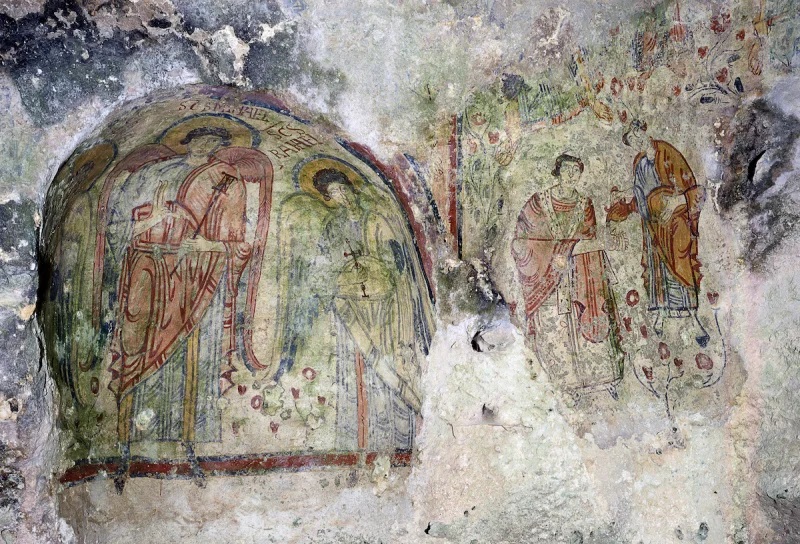By Helene Stapinski for TIME – I first saw the cave wall in the Crypt of the Original Sin in my family province of Matera, in Southern Italy, in the Fall of 2014. The faces of the angels and Adam and Eve, painted in the 9th century by Byzantine monks, looked strangely familiar. They resembled my family.
And then there was the subject matter: Stealing food.
I had grown up in Jersey City, N.J., where swiping food was a birthright. My father worked as a warehouse checker at a cold-storage company near the mouth of the Holland Tunnel, where shrimp, lobster and steak regularly fell off the truck and into our freezer at home. My grandfather had gotten his nickname, Beansie, by stealing a crate of beans as a hungry kid.
We even had a story in my family about relatives back in Southern Italy so desperate they stole pears from a farm in beautiful Basilicata, not unlike Adam and Eve stealing that apple in the lush Garden of Eden.
I stared at the cave wall. That story of original sin involved what was likely the first crime committed in most societies. Stealing fruit was not a metaphor but probably the first sin for most people on Earth.
Before greed, there was hunger. And before possessions, there was fruit. Stealing from your neighbor’s harvest.
The concept of original sin, developed by St. Augustine in the fourth century, came to him after he and his friends stole pears from a neighbor’s farm. Just like my ancestors. The only difference was that Augustine was well fed. He threw the pears to the hogs, which led him to wonder, ‘Why on earth did I steal those pears? And why does man sin?’
I knew why my family did.
Over the past decade, I made four trips to Basilicata, to the instep of Italy’s boot, to research my first family crime from the 19th century. In the process, I discovered a history of poverty and subjugation so long and intense it eventually drove nine million people from their homes.
But how could a place so fertile and land so abundant leave so many so hungry?


